Mission San Gabriel Arcángel—known as the "Mother Church" of Los Angeles, founded by Spanish missionaries—just reopened to the public for the first time since an arson fire burned down the roof of its chapel nearly three years ago, in July 2020.
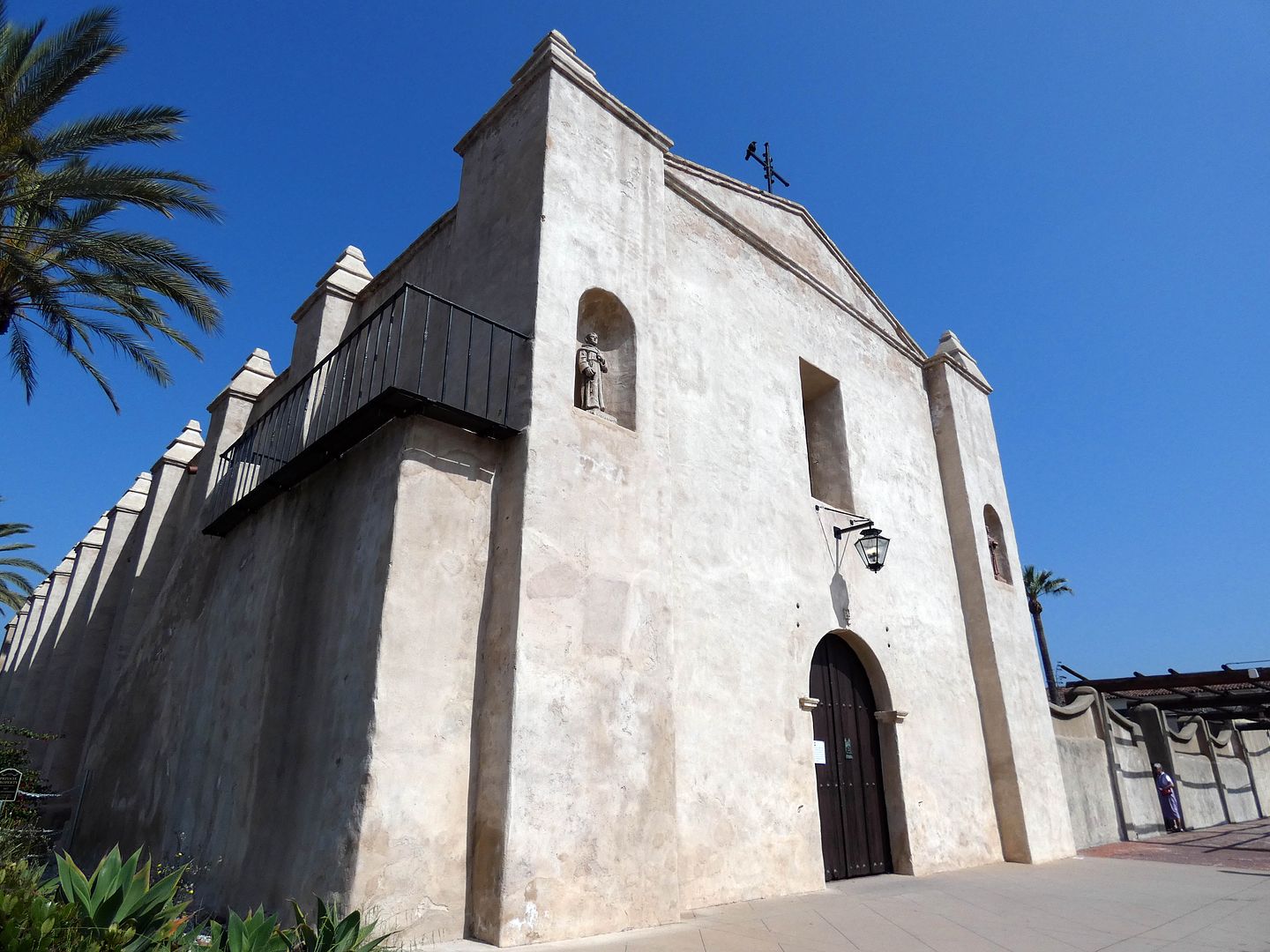
I'd actually never been inside the church, the museum, or anywhere else on the grounds except the cemetery—so this seemed like a good occasion to finally take a tour with the Historical Society of Crescenta Valley.
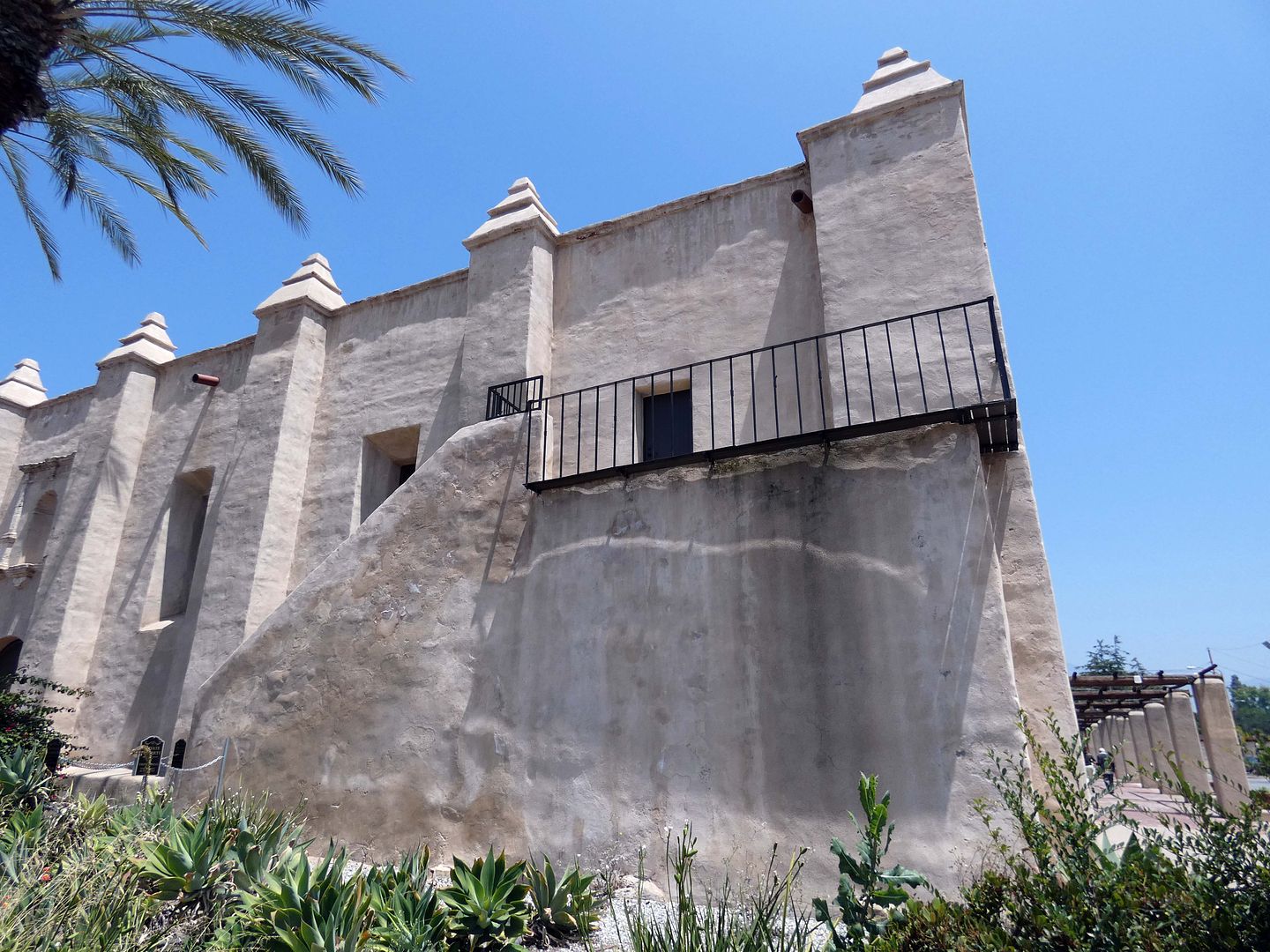
The mission's current location is actually its second. The first, completed three miles away near Montebello in 1771, had to be abandoned, as it was subject to flooding. So, the mission moved to San Gabriel in 1775, and its new church was consecrated in 1805.
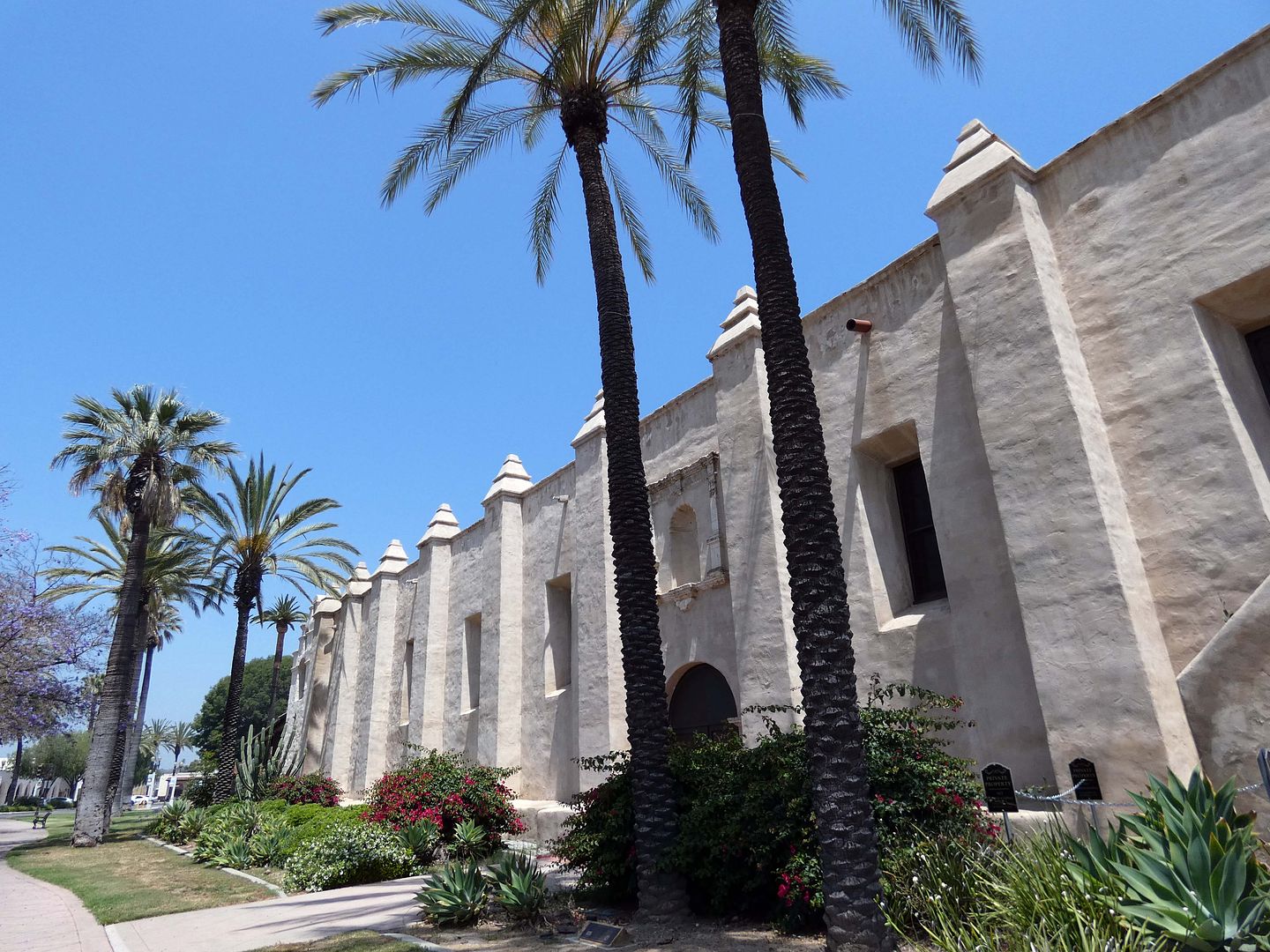
Like other California missions, it was built and rebuilt several times over—mostly to repair damage from earthquakes (like the one that took down Mission San Juan Capistrano in 1812).
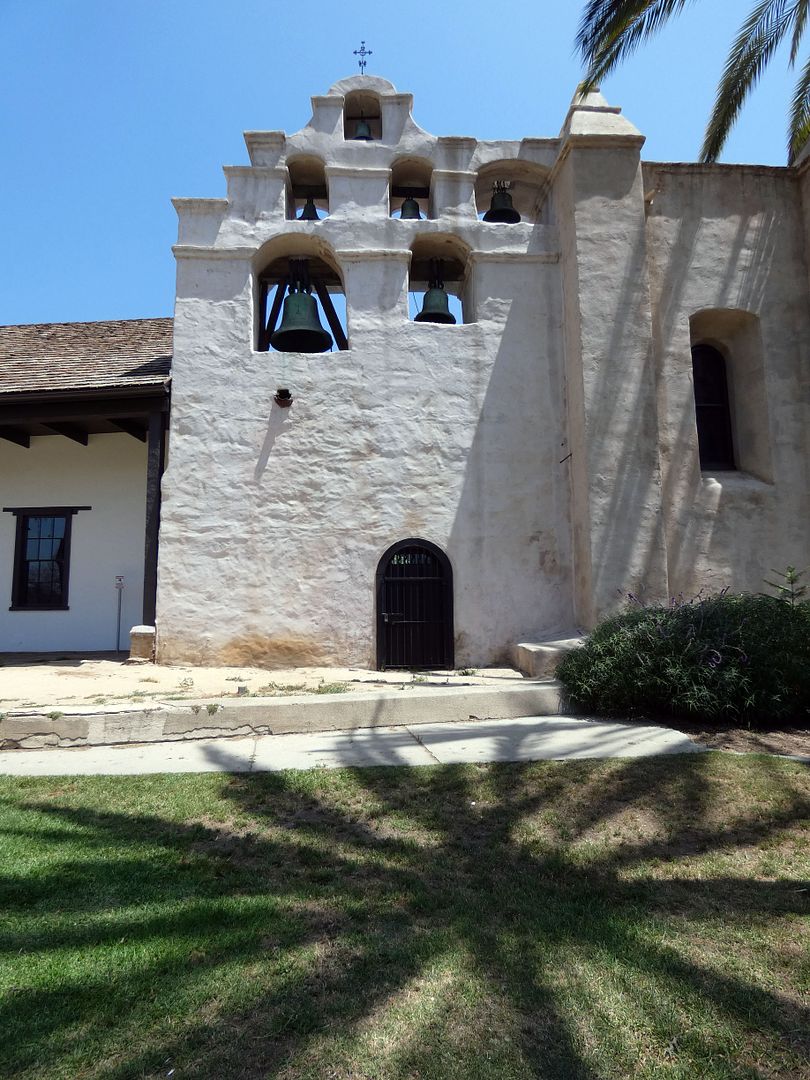
The bell wall was built in 1828—but its mission bells date back to between the 1790s and the 1830s (the same decade that the California missions were secularized).
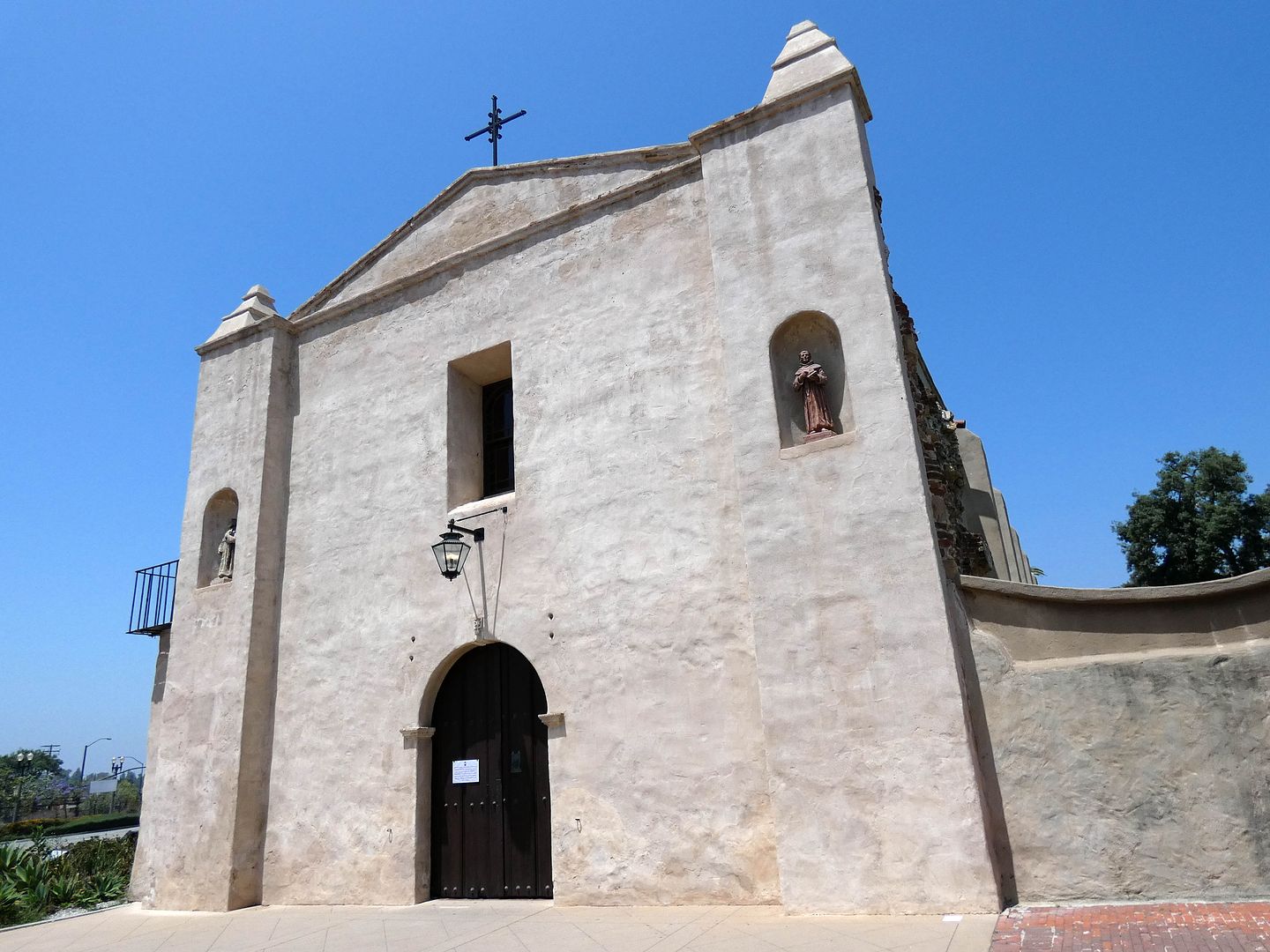

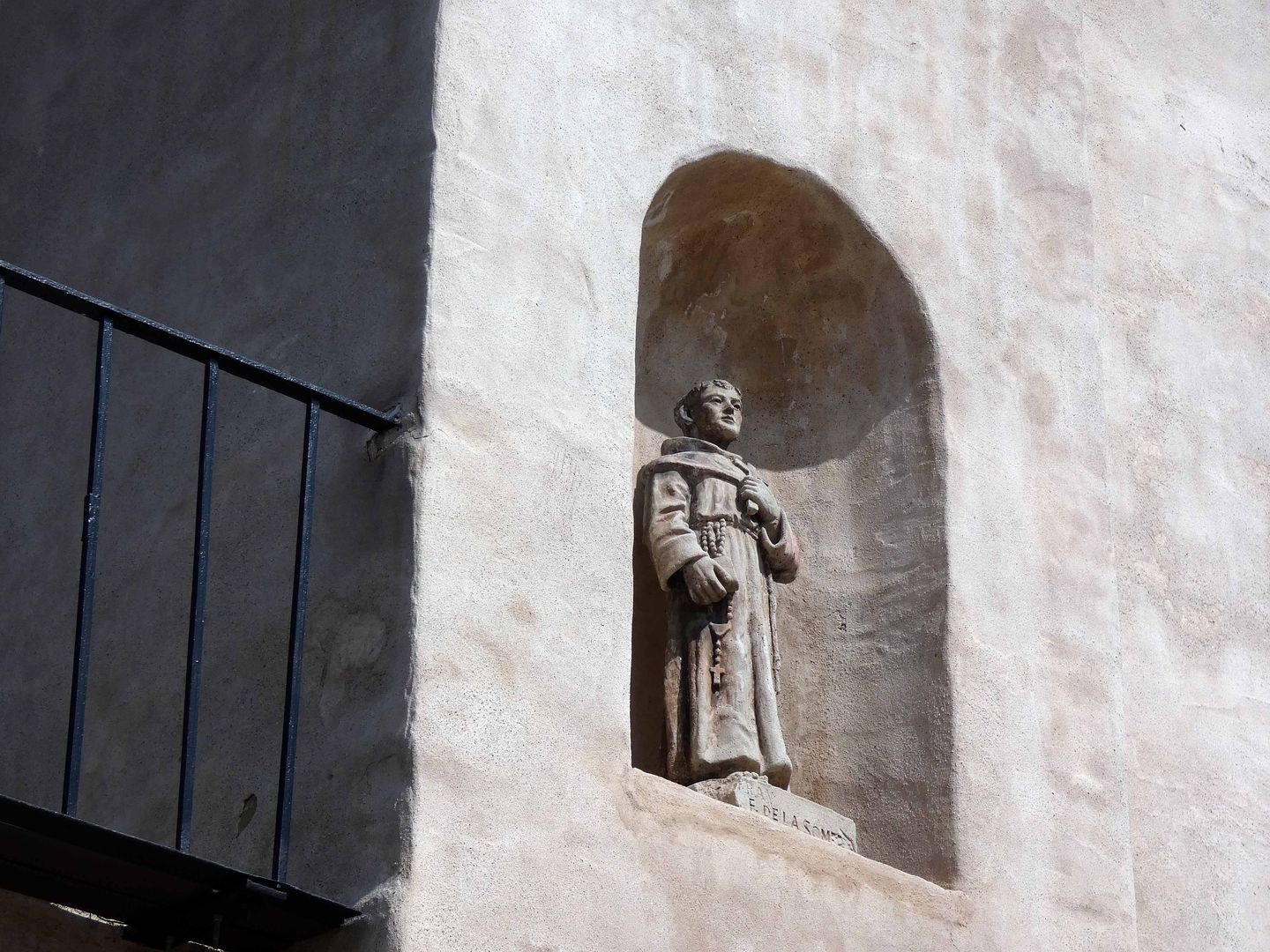
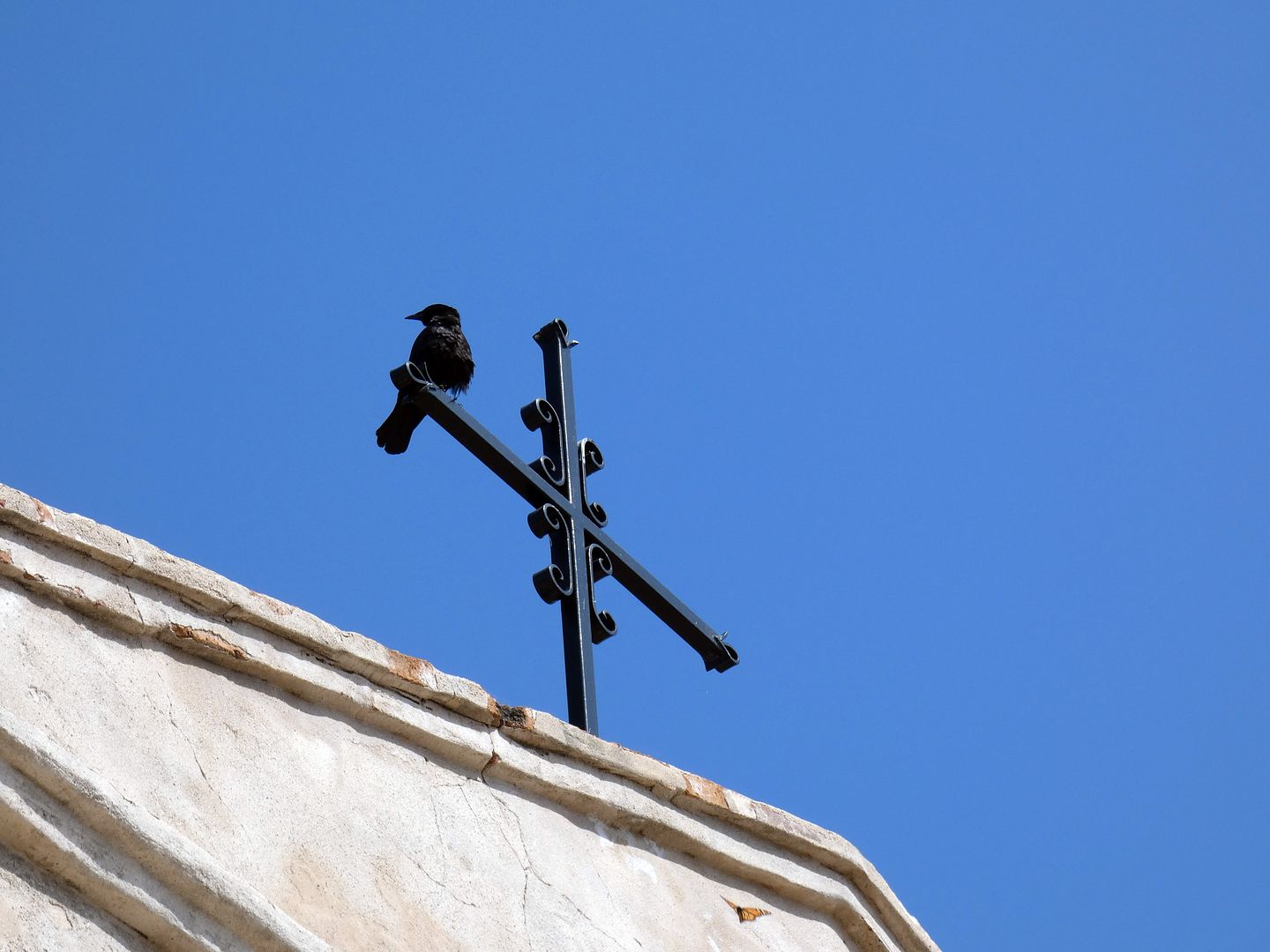
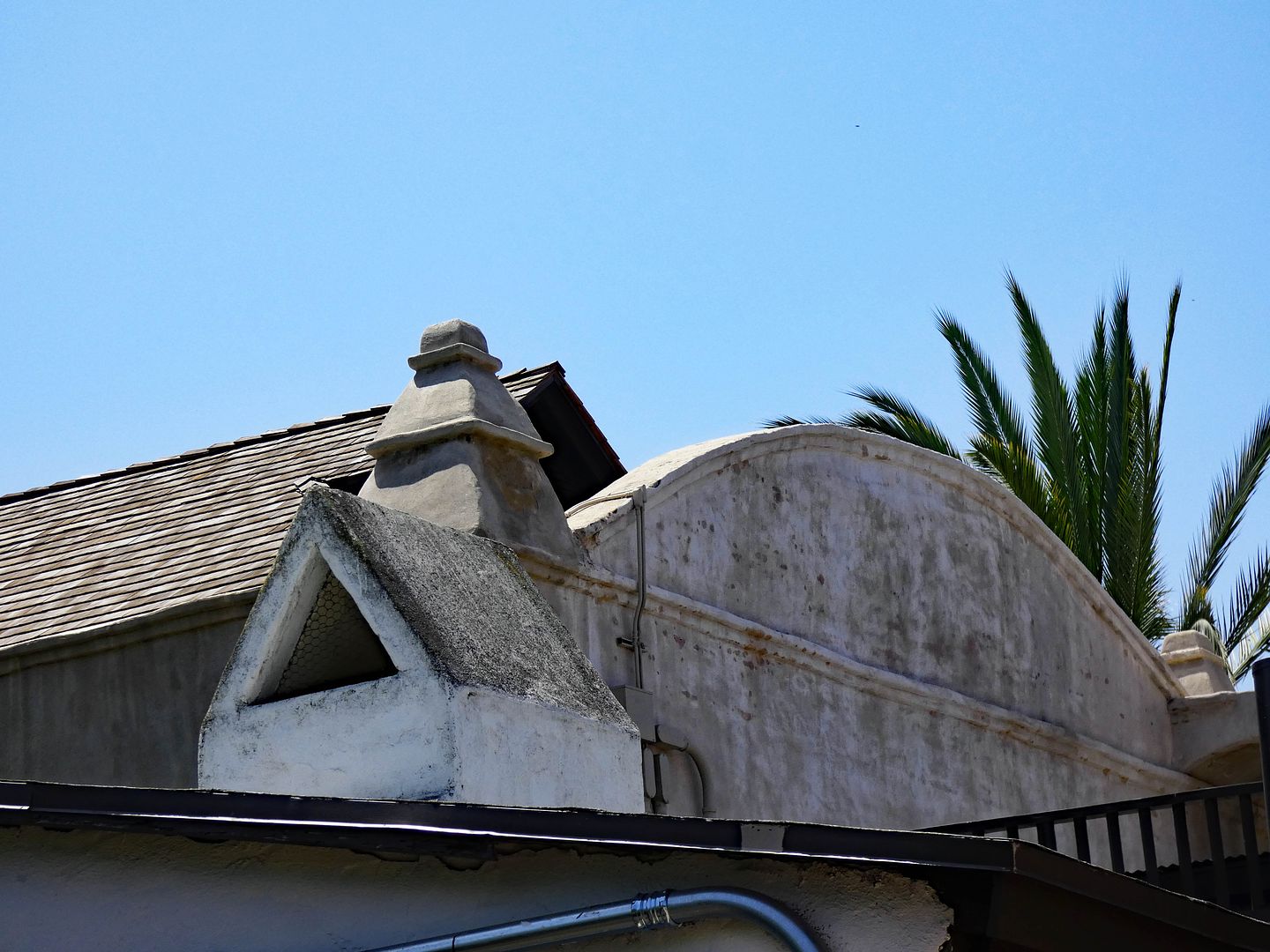
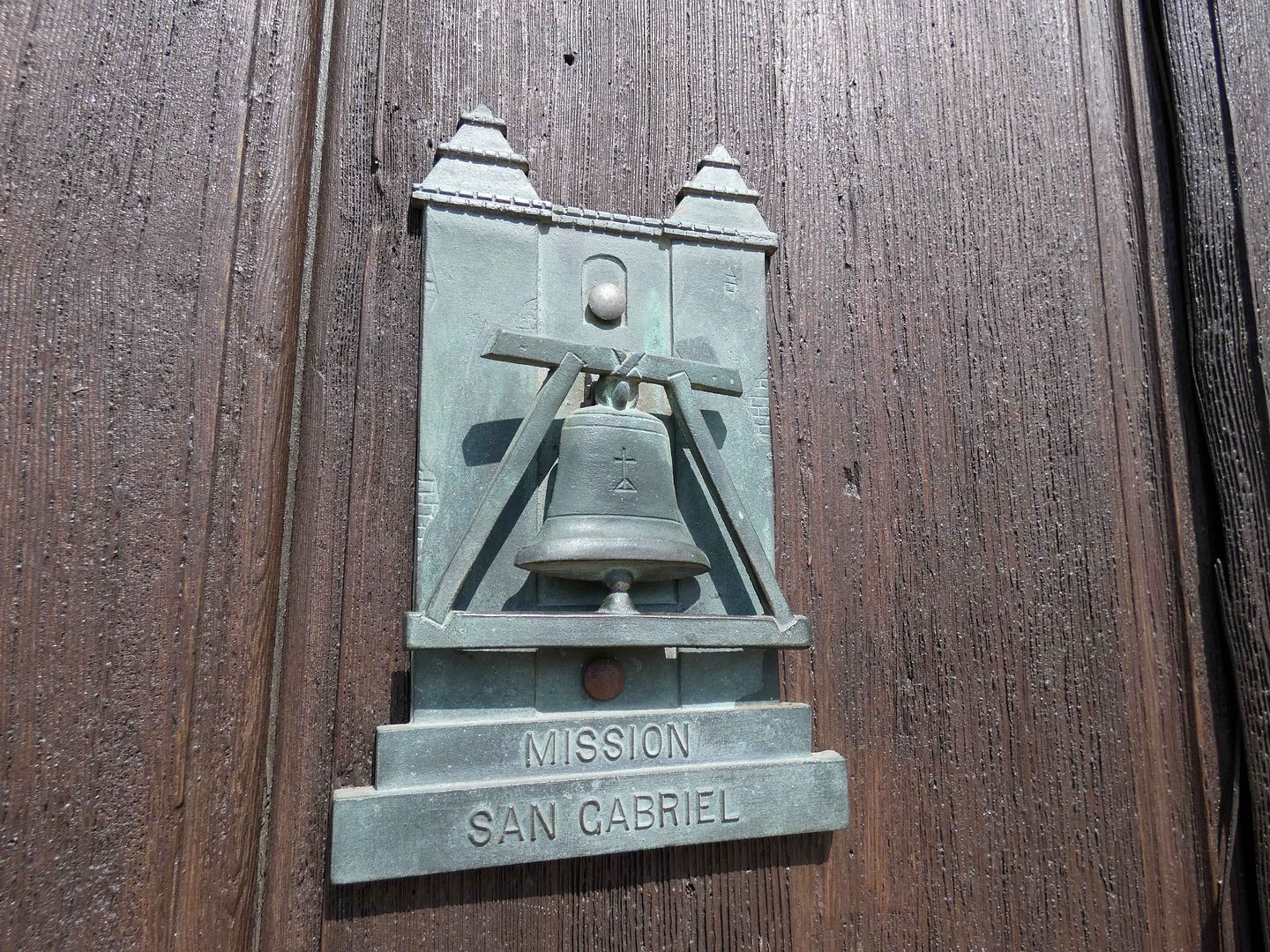
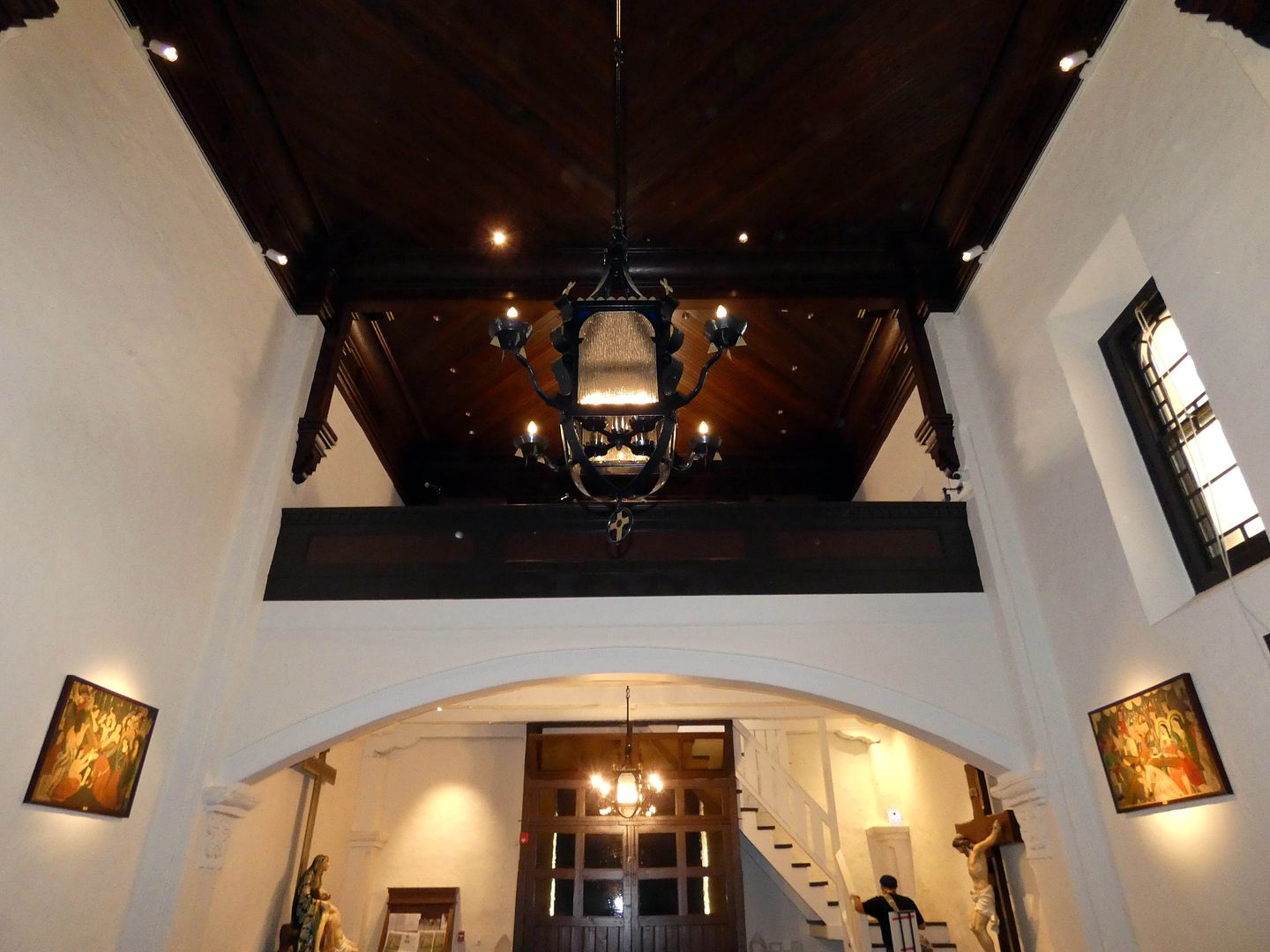

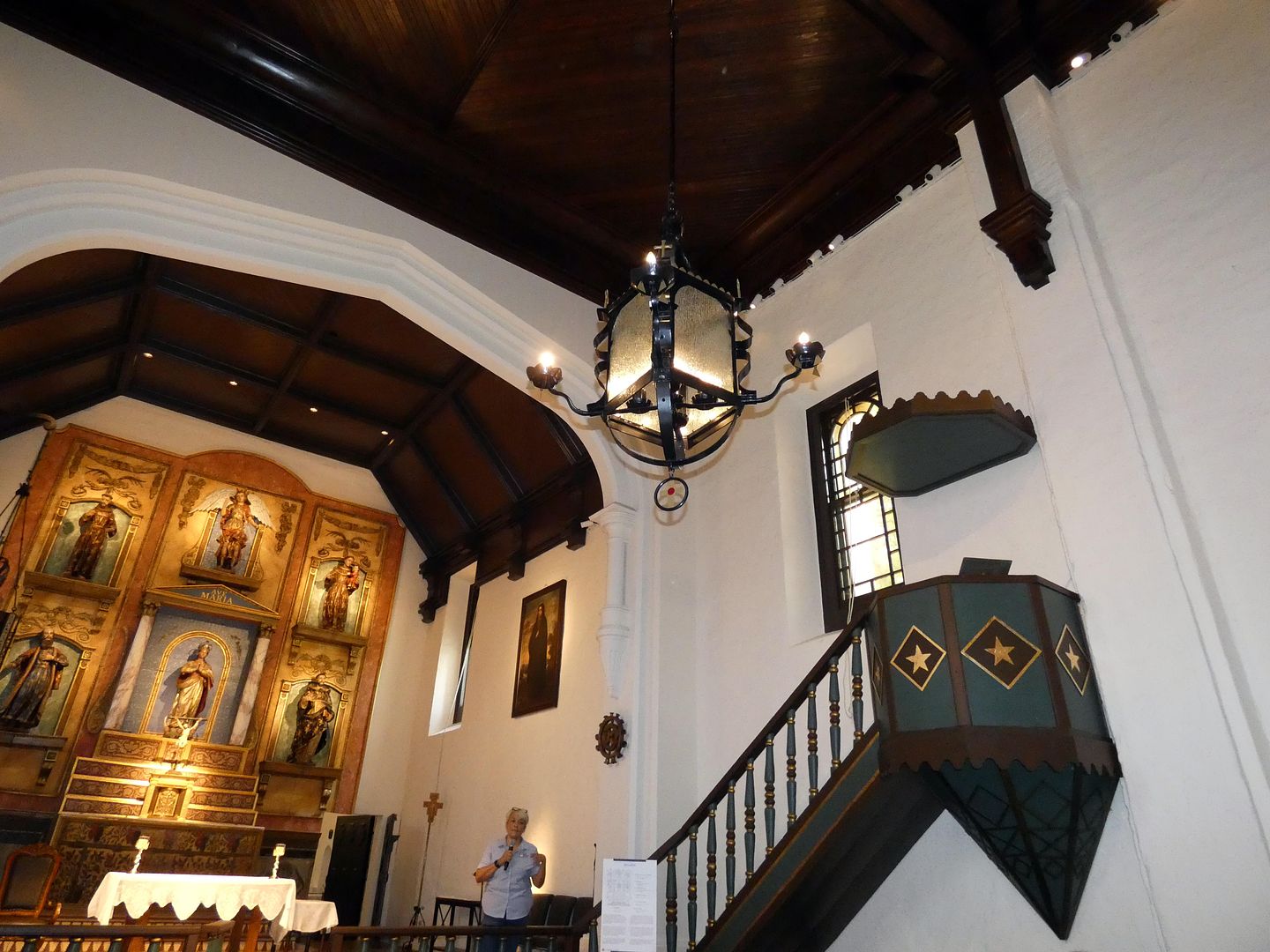
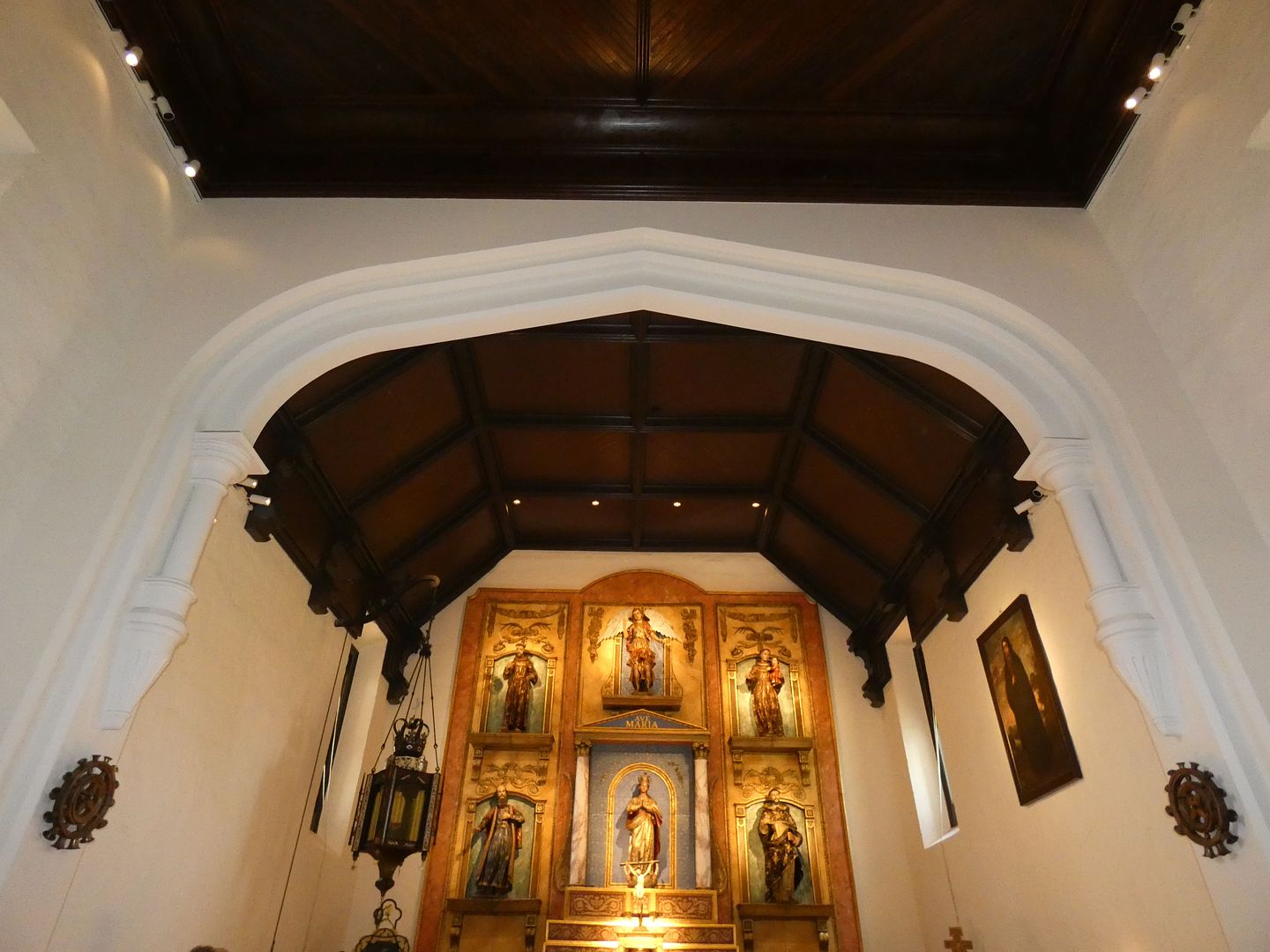

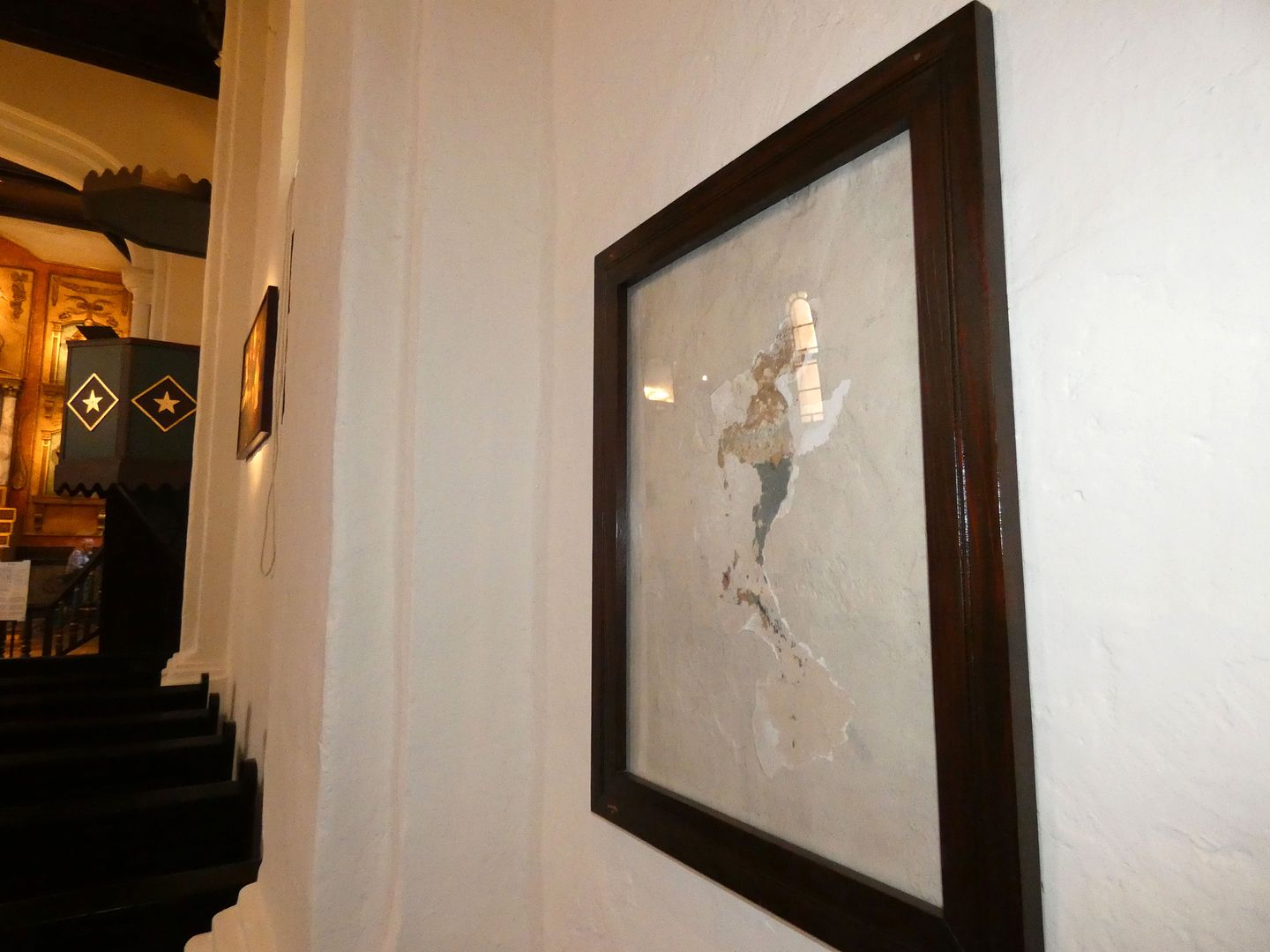


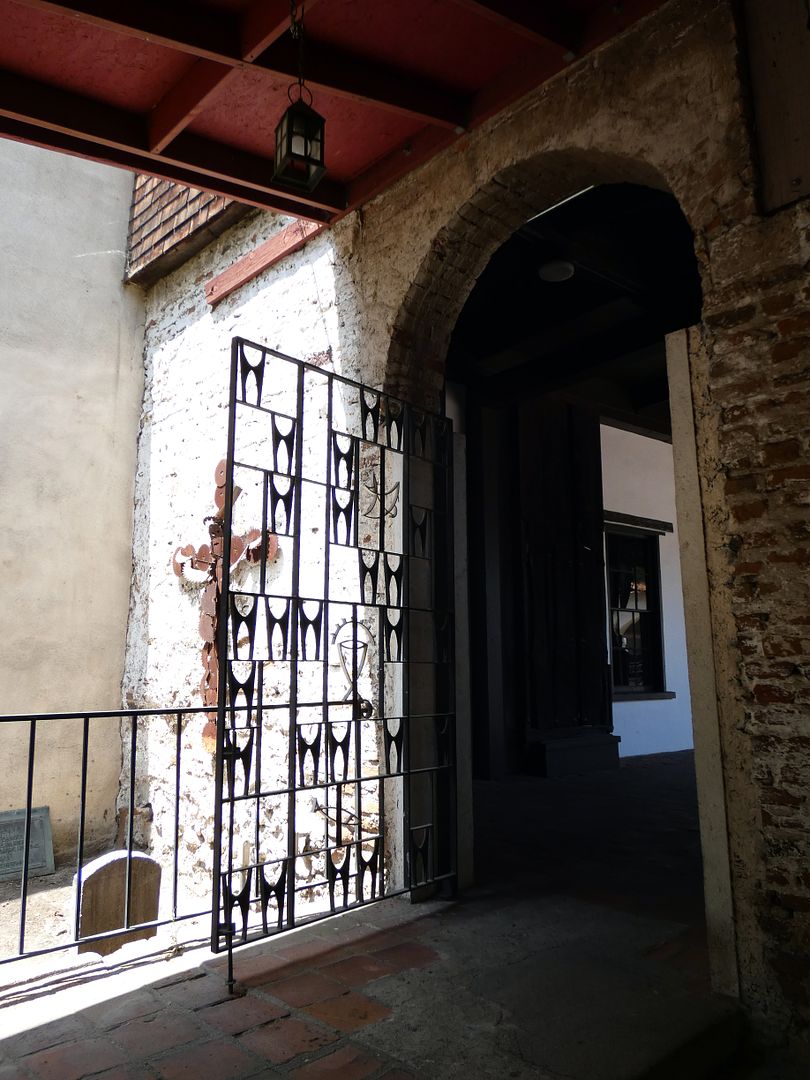
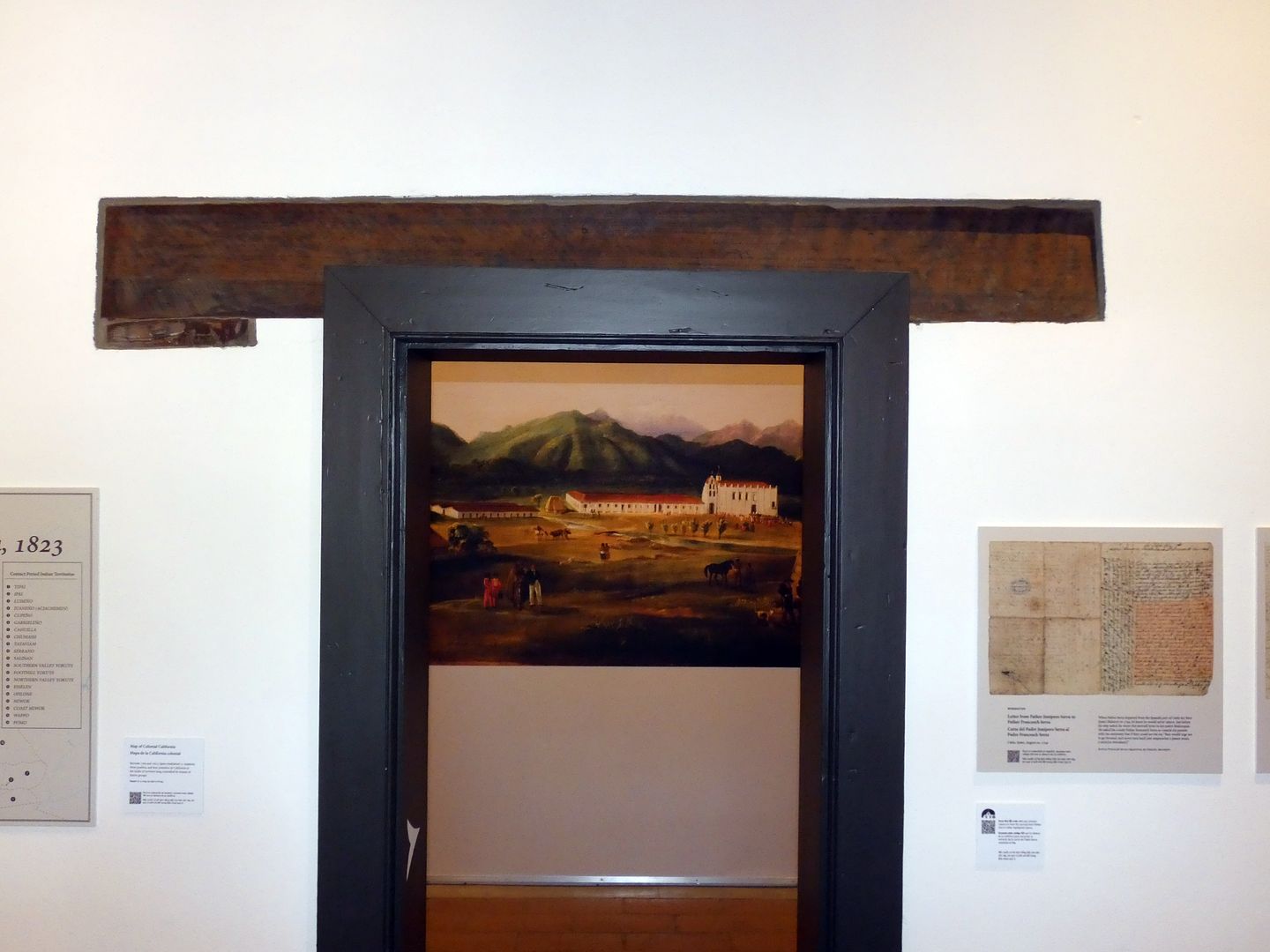
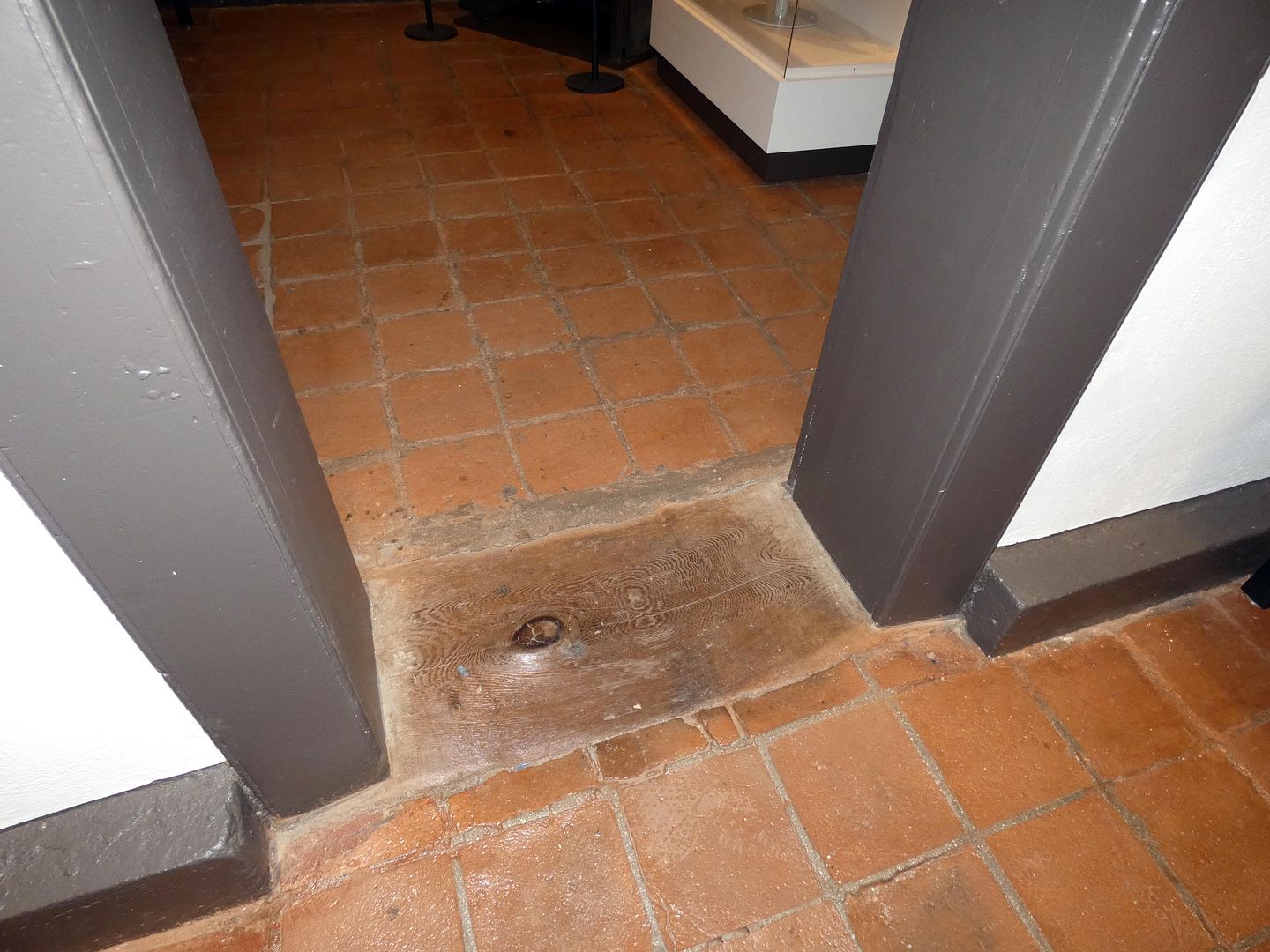
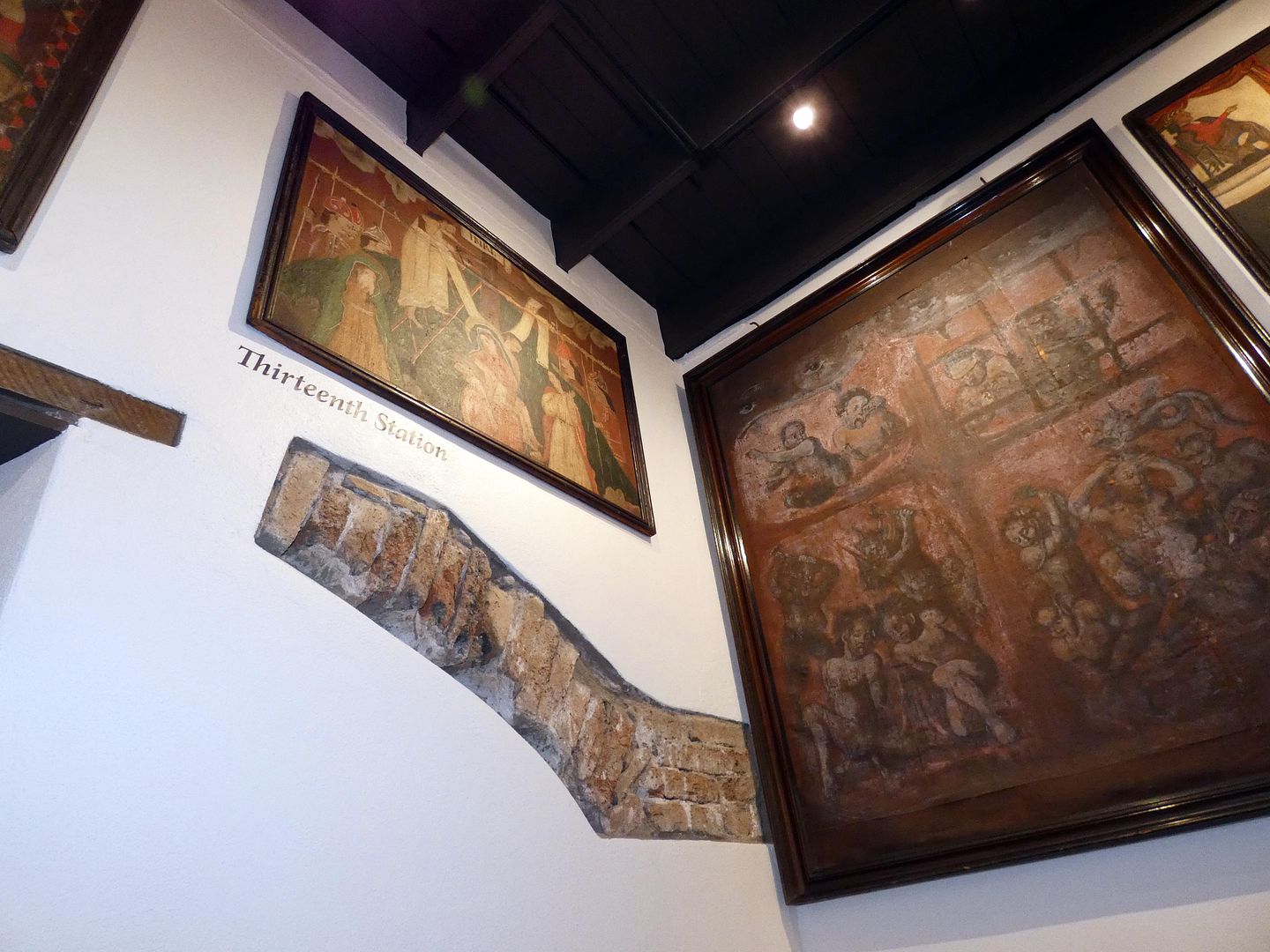
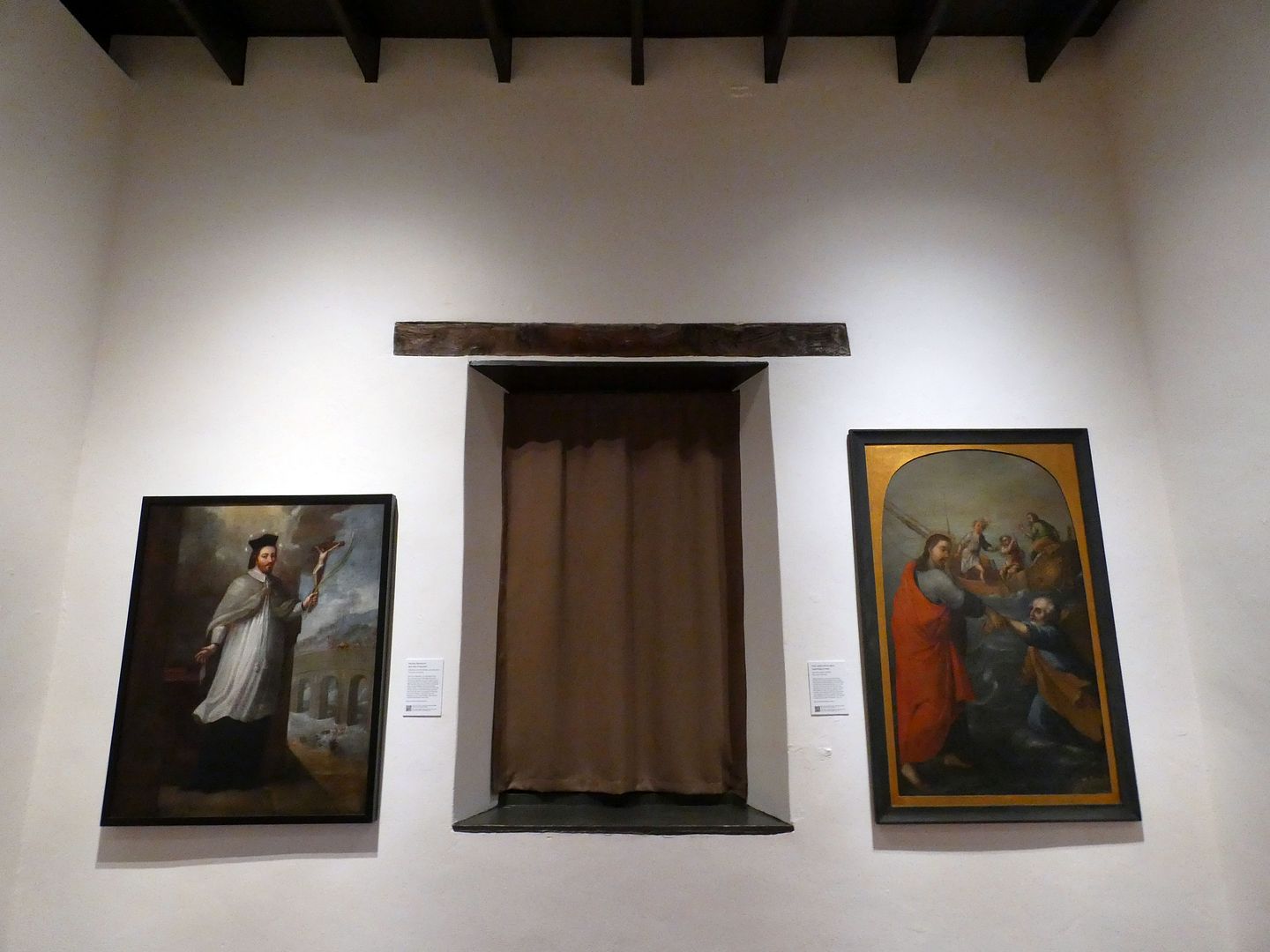
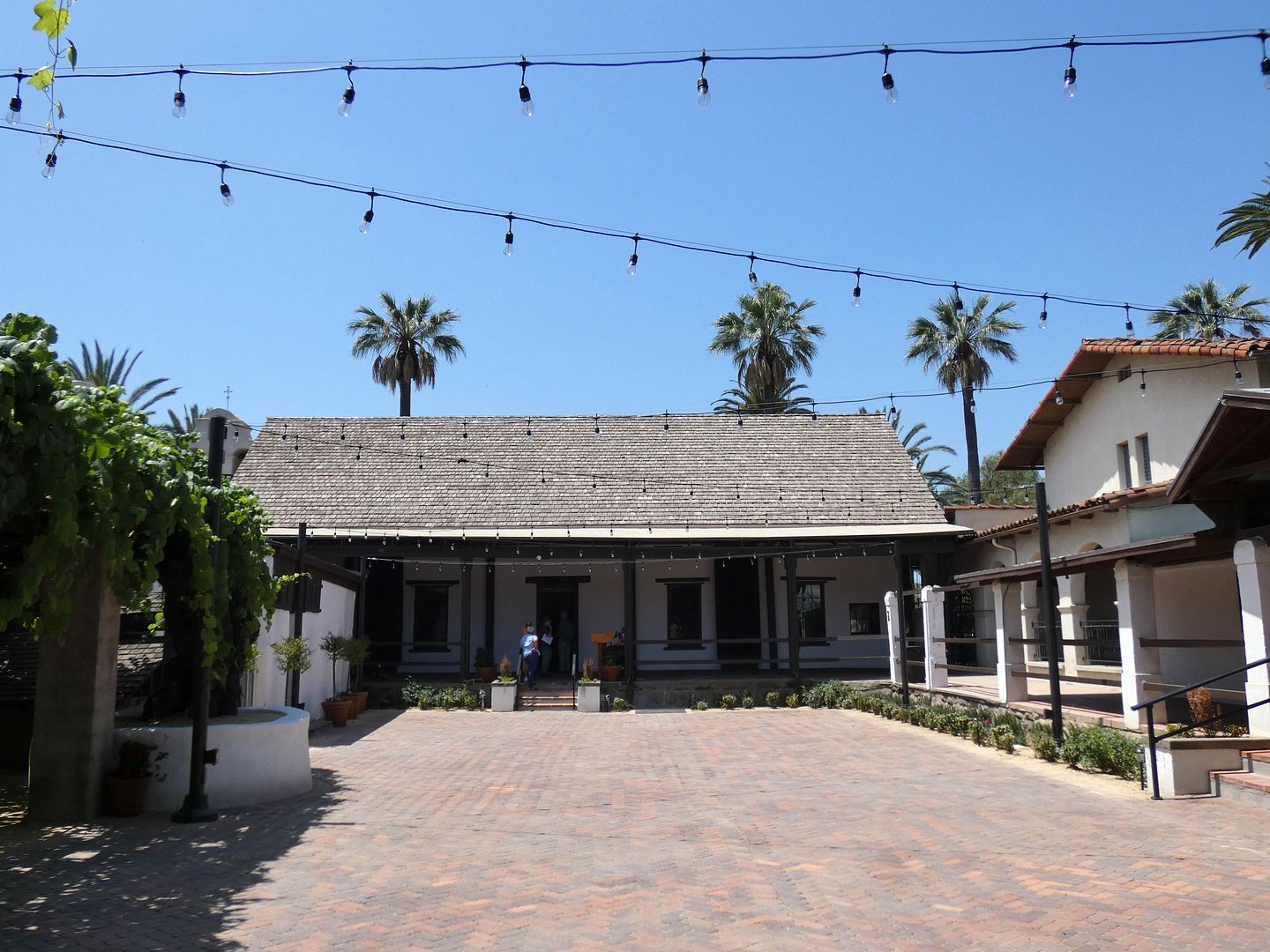
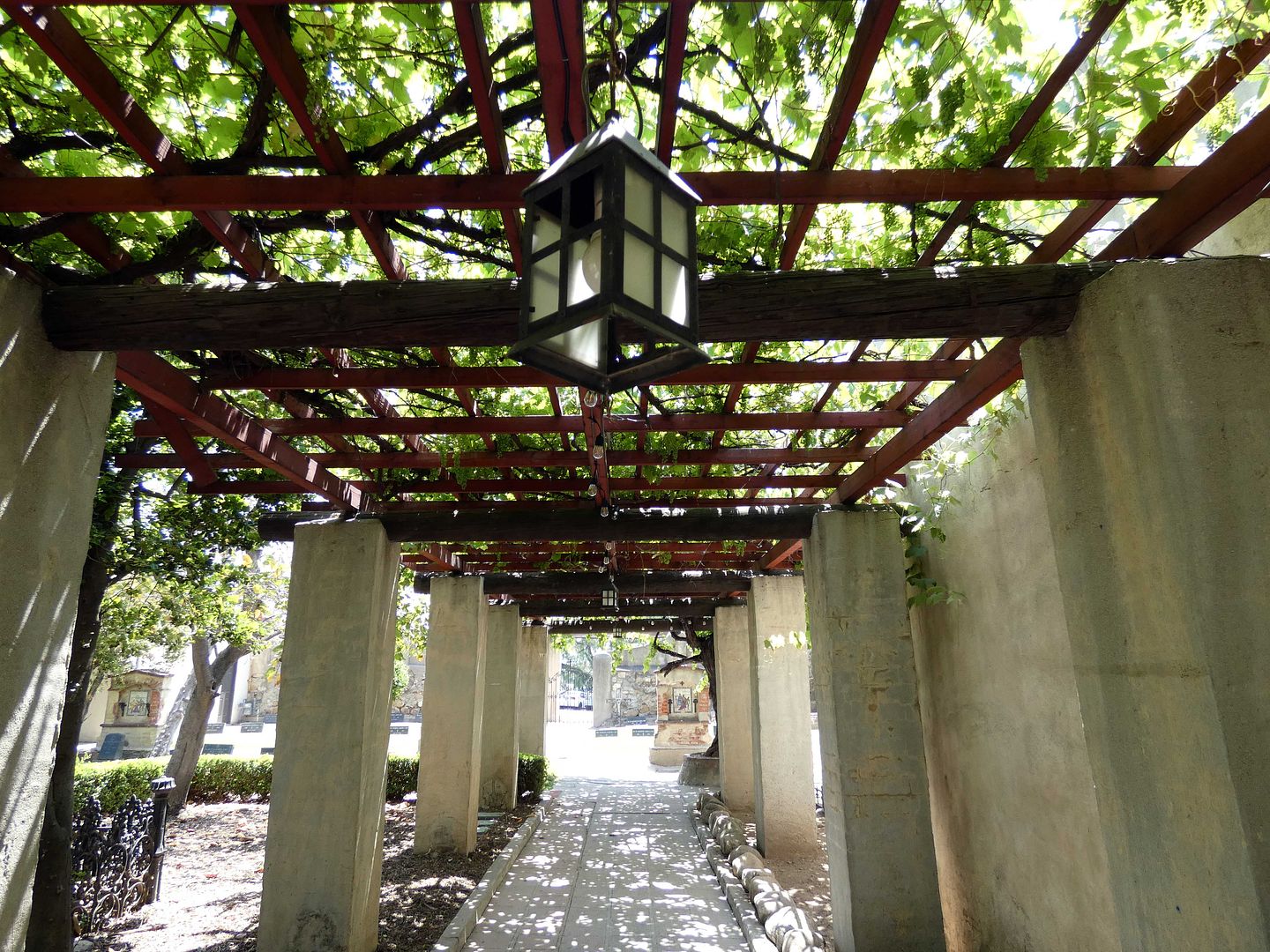
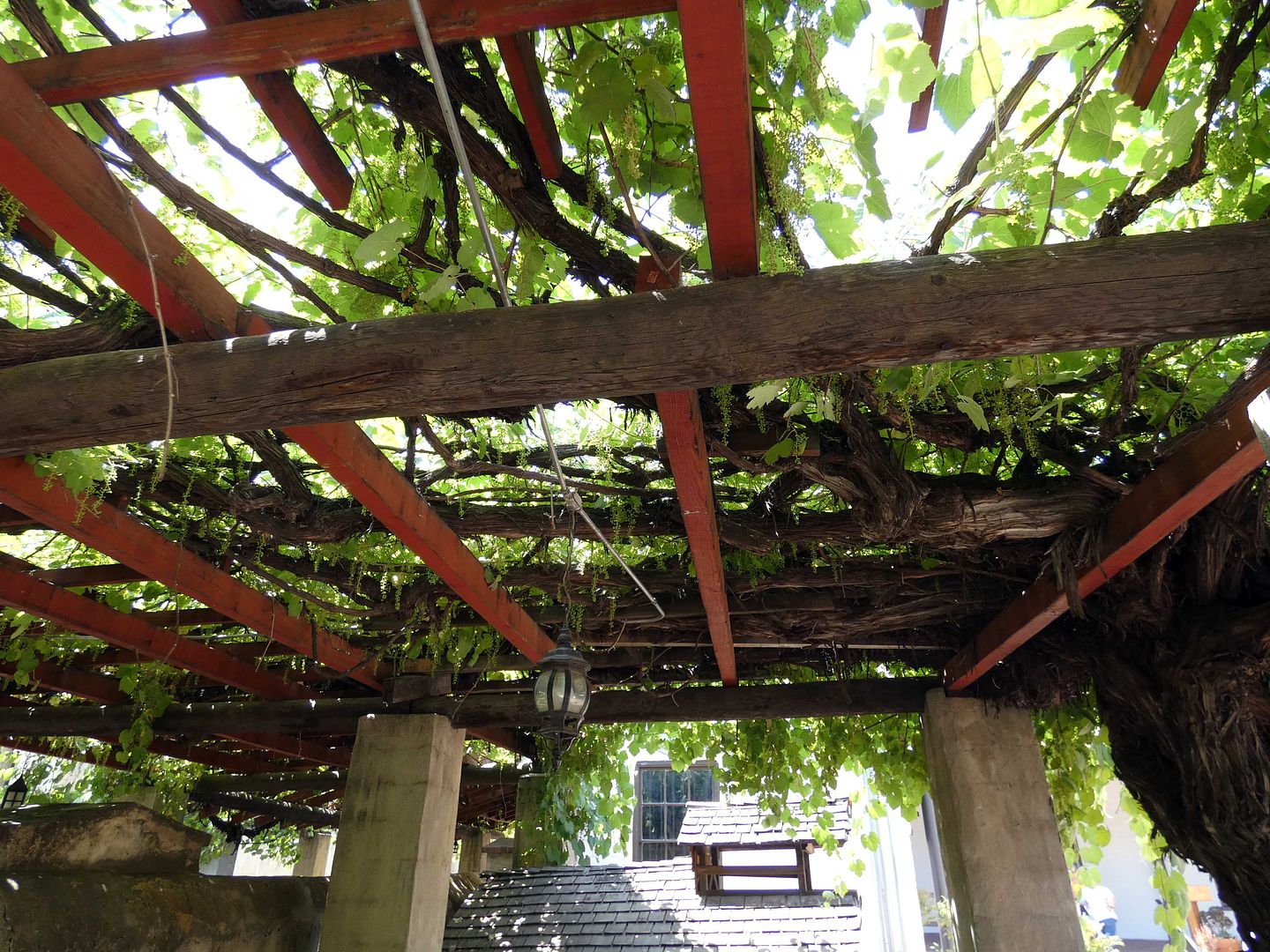
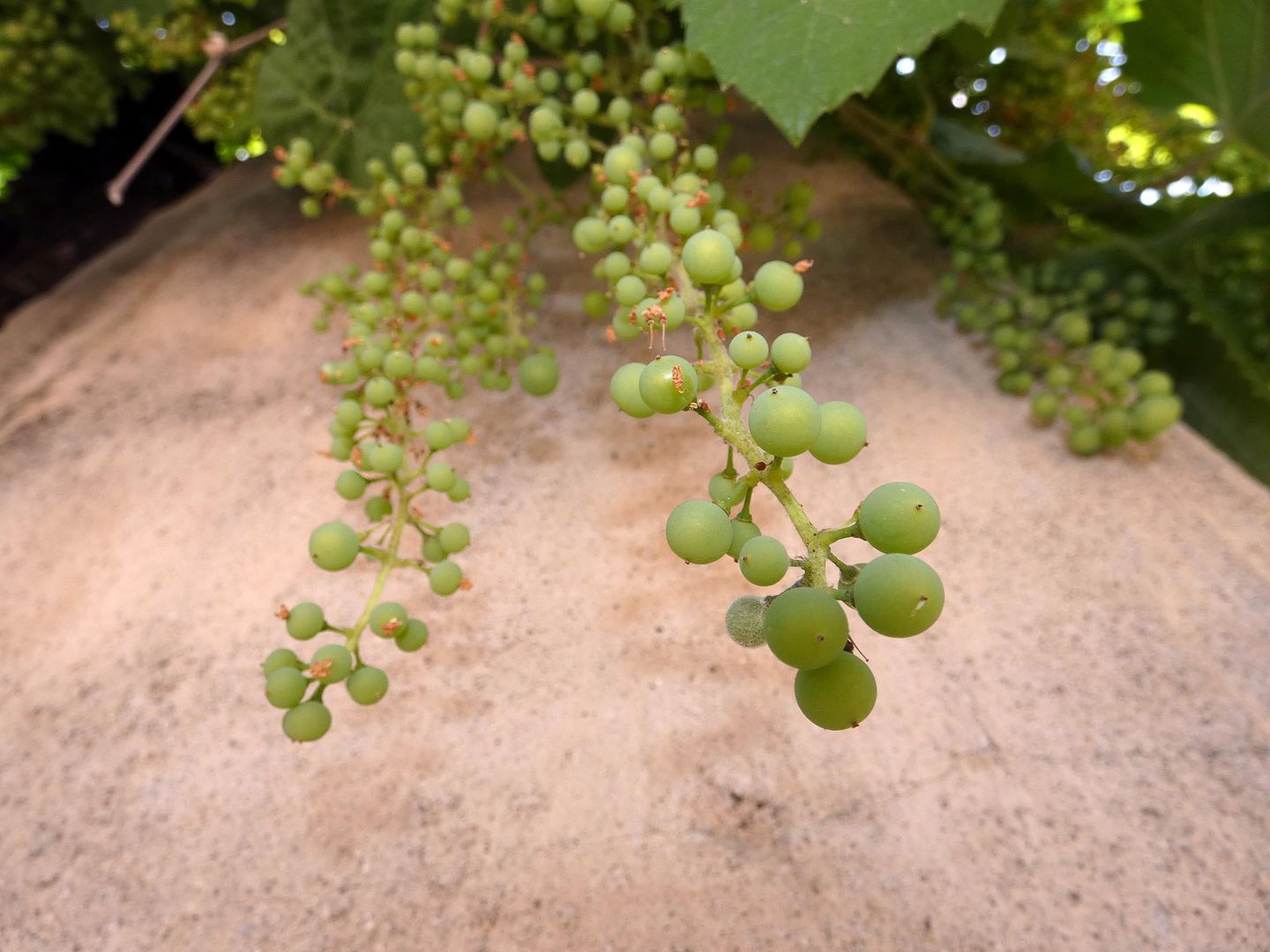
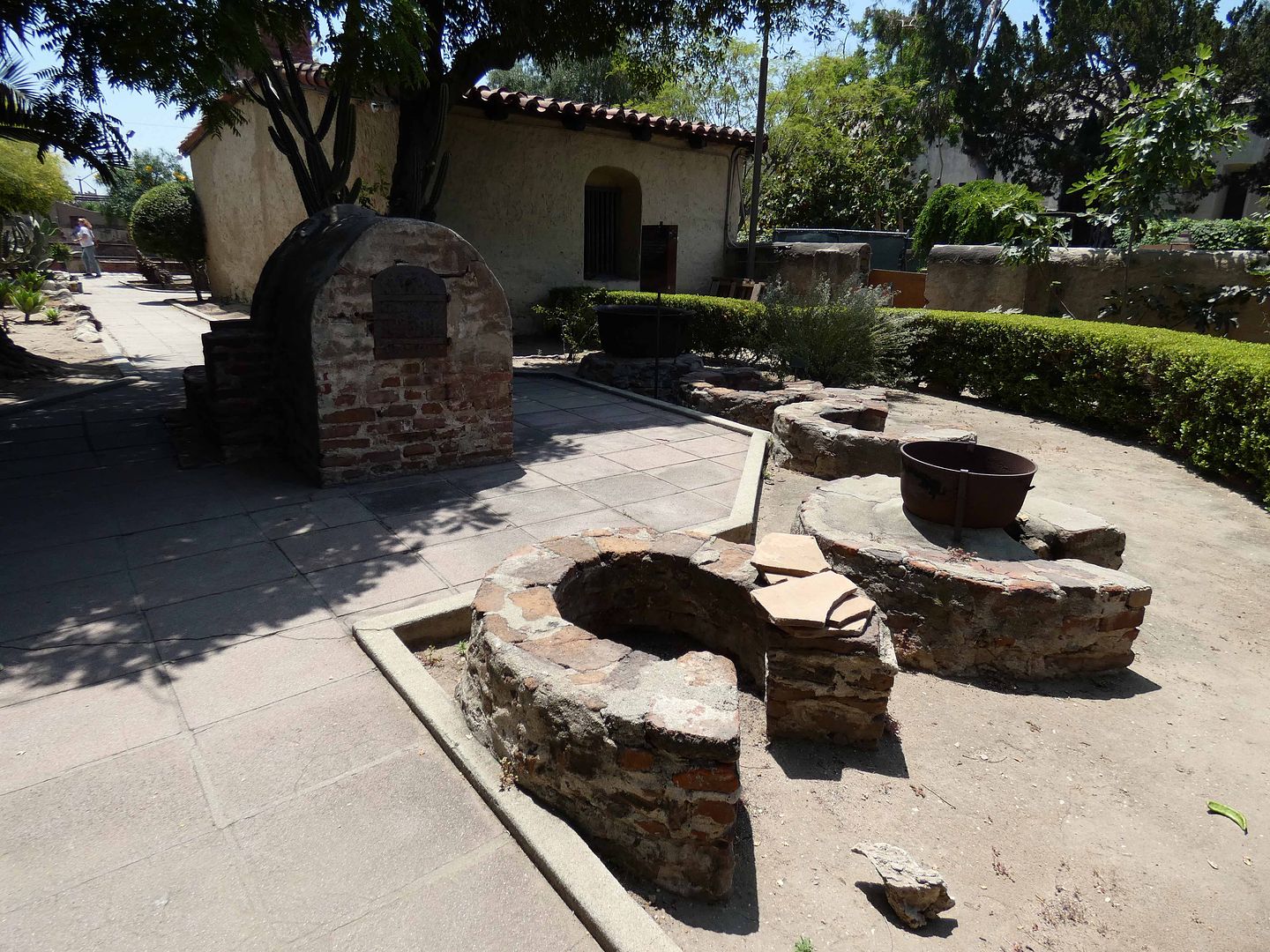
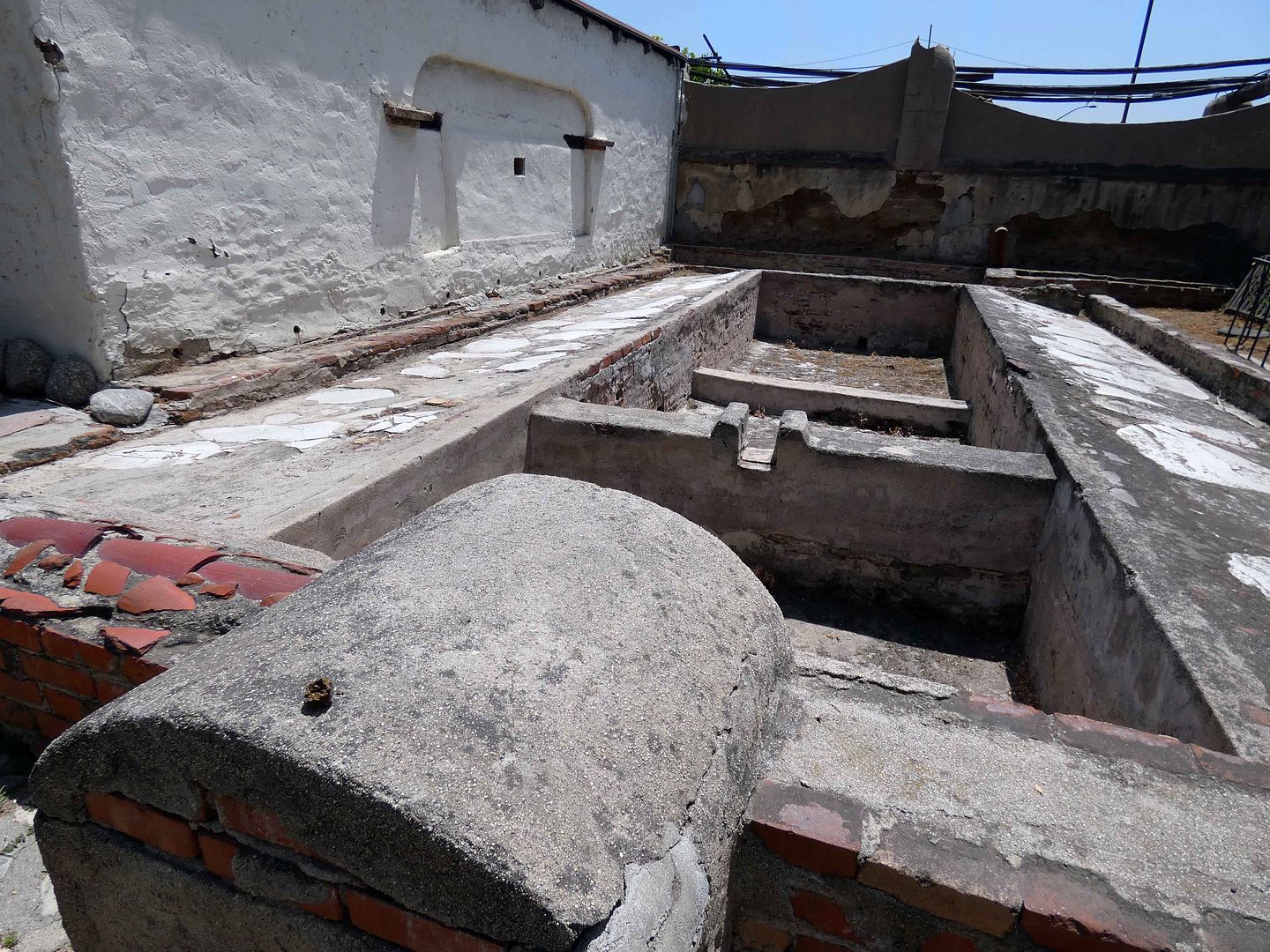

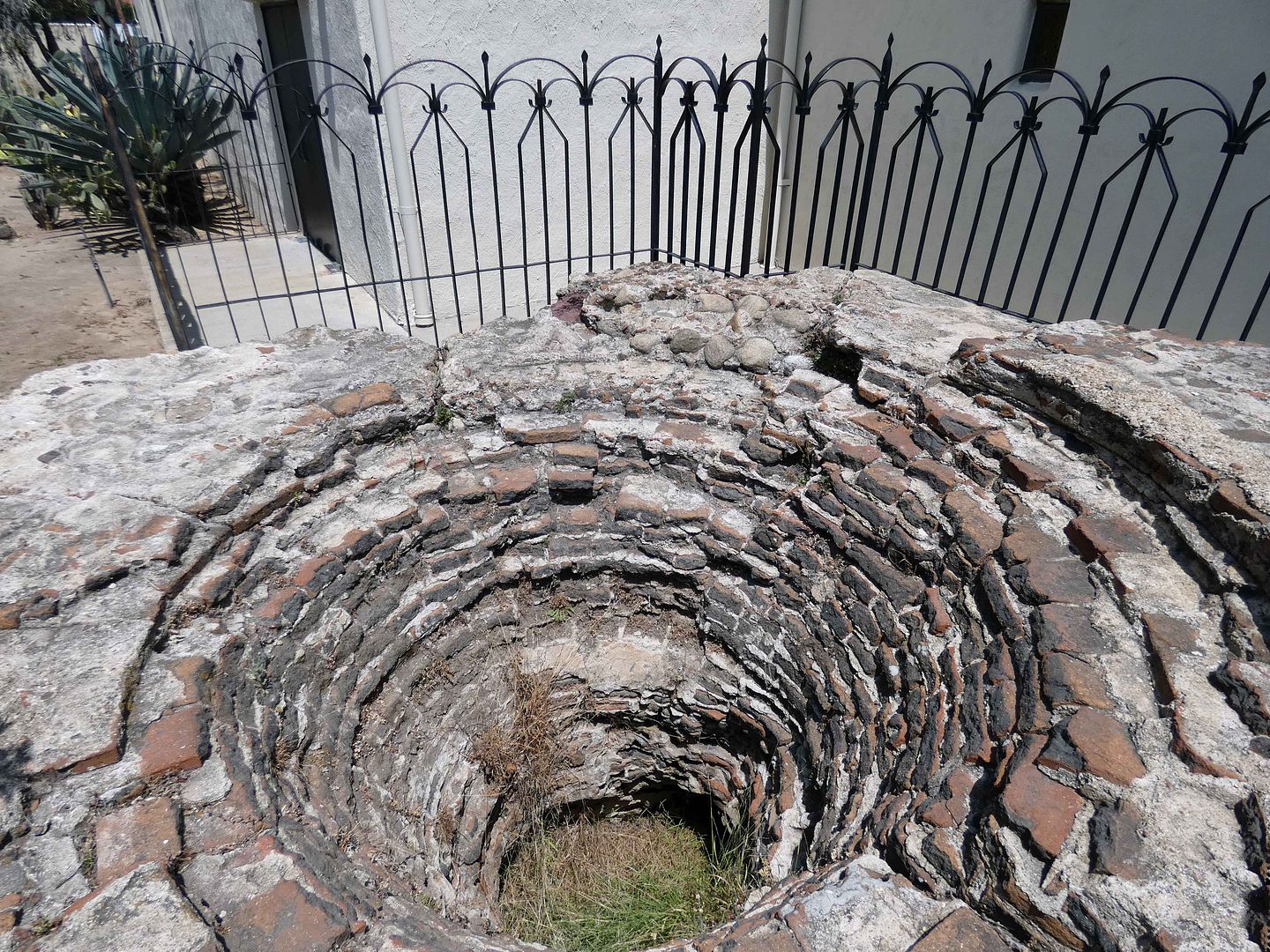

The mission church is the most "original" of the structures at San Gabriel Mission...

...with its statues of mission co-founders Fray Benito Cambón (who also designed it)...

...and Fray Angel Fernandez de la Somera...

...and a more modern cross rising high between them from the restored roof.

The mission church had actually gone through many different types of roofs over the last couple of centuries—but the most recent design is a pitched wood roof with steel reinforcements, which has been completely replaced.

Some might say it's a miracle that more didn't get damaged in the blaze.

The fire started in the choir loft, among the wooden organ pipes.

The redwood false ceiling, first installed in 1885, was completely destroyed and replaced, although now the stained wood no longer bears painted murals as it did before.

Even what didn't directly catch on fire didn't necessarily escape damage, especially from smoke and water (a necessary evil in firefighting efforts). The pulpit, for instance, was damaged by falling debris and has been restored.

All that damage gave the mission the opportunity to return the church back to how it looked at an earlier period of significance—including simplifying the painted color scheme (including on the altar proscenium).

The main altarpiece (or retablo) was repaired and restored to reverse some more modern-day changes to it and to incorporate some of the coral color scheme that used to appear on the walls of the church.

Some areas were preserved unrestored to show the kind of color analysis that was done in the restoration (or, in biblical terms, "resurrection").

Another window shows that building materials behind the plastered and painted walls, including large rocks, stones, and mortar. (Reportedly, closer to the ceiling the walls are made from fired bricks.)

The baptistry stands relatively untouched, with a hammered copper baptismal font, a gift from Spain's King Carlos III (a.k.a. King Charles III, 1759-1788), still at its center. Baptisms, of course, are a key component of missionary work—and San Gabriel Mission was one of the most active in terms of the number of baptisms that occurred there before secularization in 1834.

The mission leadership did, however, take the recent closure as an opportunity to reimagine the museum...

...which is housed in one of the oldest buildings on campus, built in 1812 and once used as sleeping quarters.

Some of its historic features have been preserved...

...and some peek-a-boo characteristics of its own are visible.

For the post-fire reopening, the mission involved members of the local Tongva (Gabrieleño in Spanish) tribe to help curate the museum's inaugural exhibition, "Mission San Gabriel Arcángel, 1771-1900: Natives, Missionaries, and the Birth of Catholicism in Los Angeles." (Ed: For the record, I personally question the appropriateness of the word "Natives" in this context, as opposed to "Native Americans" or "First" or "Indigenous" people, but go see for yourself and form your own opinions.)

Across the museum courtyard/mission quadrangle...

...there's the historic mission grapevine...

...planted in 1775...

...and still bearing fruit.

In the "Old Kitchen" area, replicas of outdoor stoves/fireplaces show what meal prep used to be like.

Livestock were slaughtered for their hides, which were soaked in tannery vats to create cured leather products, which the mission would barter in exchange for other goods.

And the animal fat (a.k. tallow) from slaughtered livestock was boiled in brick furnaces to make soap and candles.

It's pretty incredible to see so many original features, even if they're in ruins—especially given the fact that it changed hands a couple of times before it was taken from the church and then given back to it. Then-Governor Pío Pico, who'd been born there in 1801), essentially seized the property during secularization and made it his own—but then had to give it up in order to settle his debts.
Despite all that, San Gabriel Mission was given back to the church in 1854 and is now part of the Archdiocese of Los Angeles. It's got an active parish—but it's also a tourist attraction for those interested in LA and California history (be it good or bad).
Related Posts:

No comments:
Post a Comment